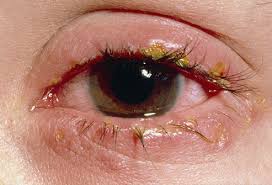Smartphones to detect eye diseases
Mon 06 Jul 2015, 14:00:33

Washington: A new software that can detect eye diseases by making use of the smartphone camera has been developed.
The system is aimed at general physicians who could detect conditions such as diabetic macular edema and refer the patient to a specialist, researchers said. Macular edema occurs when fluid and protein deposits collect on or under the macula of the eye (a yellow central area of the retina) and causes it to thicken and swell. The swelling may distort a person's central vision.
The software was developed by Medical and Surgical Centre for Retina in collaboration with biomedical engineers from the Monterrey Institute of Technology and Higher Education (ITESM) in Mexico and uses the camera of the phone to detect any abnormality in the thickness of the retina.
"The idea is to detect and prevent diseases in general practice. We are not replacing the specialist, we want to know which patients have a disease and make an early detection," said Dr Juan Carlos Altamirano Vallejo, medical director of the Medical and Surgical Centre for Retina in Mexico.
He said that the
technology is designed for general physicians, "who support the health system in Mexico and, even without in-depth knowledge of ophthalmology, can, with this tool, detect certain abnormalities and send the patient to the specialist."
technology is designed for general physicians, "who support the health system in Mexico and, even without in-depth knowledge of ophthalmology, can, with this tool, detect certain abnormalities and send the patient to the specialist."
With just having the app on the cellphone and focusing the camera on the eye, immediate results will be obtained, researchers said.
"We start off the fact that it is much cheaper to prevent than to cure blindness," said Vallejo.
The app also has utility in rural communities, where expertise areas such as ophthalmology have not arrived yet because equipment to detect these diseases are expensive and so far only the visiting specialists can do this kind of diagnosis, researchers said.
"It will help those that when they go to the eye doctor are already blind, we needed to go a step back, to know who is at risk and needs to go to a specialist. Not wait for a doctor," said Vallejo.
Software development has been satisfactory and is expected to soon be marketed and incorporated in the basic health system in Mexico, researchers said.
No Comments For This Post, Be first to write a Comment.
Most viewed from Specials
Most viewed from World
AIMIM News
Latest Urdu News
Most Viewed
May 26, 2020
Do you think Canada-India relations will improve under New PM Mark Carney?
Latest Videos View All
Like Us
Home
About Us
Advertise With Us
All Polls
Epaper Archives
Privacy Policy
Contact Us
Download Etemaad App
© 2025 Etemaad Daily News, All Rights Reserved.










































